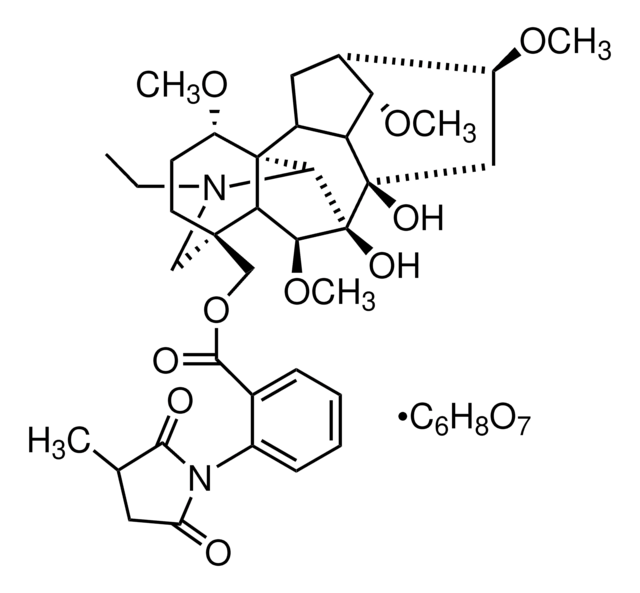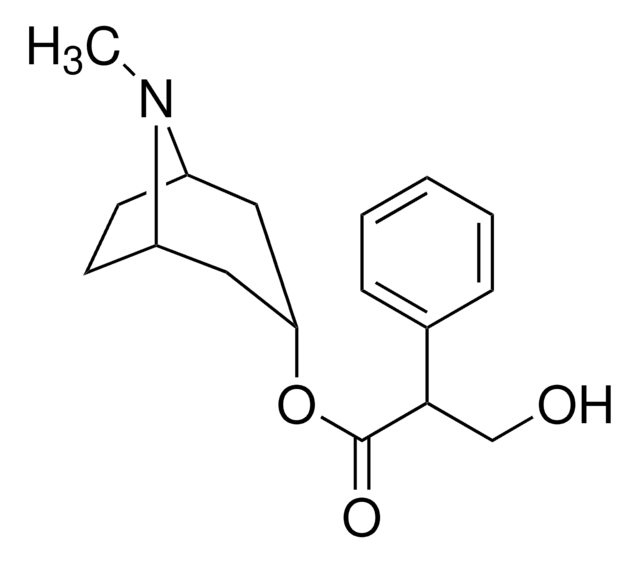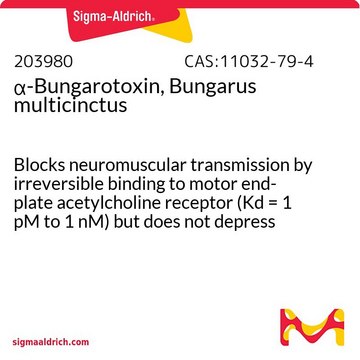Kluczowe dokumenty
M9020
Mecamylamine hydrochloride
≥98% (TLC), powder, nAChR antagonist
Synonim(y):
2-(Methylamino)isocamphane hydrochloride, Inversine, N,2,3,3-Tetramethylbicyclo[2.2.1]heptan-2-amine hydrochloride
About This Item
Polecane produkty
Nazwa produktu
Mecamylamine hydrochloride,
Formularz
powder
Poziom jakości
rozpuszczalność
ethanol: 122 mg/mL
H2O: 47 mg/mL
isopropanol: 476 mg/mL
glycerol: 95 mg/mL
inicjator
AstraZeneca
ciąg SMILES
Cl.[H][C@@]12CC[C@@]([H])(C1)C(C)(NC)C2(C)C
InChI
1S/C11H21N.ClH/c1-10(2)8-5-6-9(7-8)11(10,3)12-4;/h8-9,12H,5-7H2,1-4H3;1H/t8-,9+,11?;/m1./s1
Klucz InChI
PKVZBNCYEICAQP-CIISUUNXSA-N
informacje o genach
human ... CHRNA1(1134) , CHRNA10(57053) , CHRNA2(1135) , CHRNA3(1136) , CHRNA4(1137) , CHRNA5(1138) , CHRNA6(8973) , CHRNA7(1139) , CHRNA9(55584) , CHRNB1(1140) , CHRNB2(1141) , CHRNB3(1142) , CHRNB4(1143)
Szukasz podobnych produktów? Odwiedź Przewodnik dotyczący porównywania produktów
Zastosowanie
Działania biochem./fizjol.
Cechy i korzyści
Przestroga
Hasło ostrzegawcze
Danger
Zwroty wskazujące rodzaj zagrożenia
Zwroty wskazujące środki ostrożności
Klasyfikacja zagrożeń
Acute Tox. 3 Oral
Kod klasy składowania
6.1C - Combustible acute toxic Cat.3 / toxic compounds or compounds which causing chronic effects
Klasa zagrożenia wodnego (WGK)
WGK 3
Temperatura zapłonu (°F)
Not applicable
Temperatura zapłonu (°C)
Not applicable
Środki ochrony indywidualnej
dust mask type N95 (US), Eyeshields, Faceshields, Gloves
Wybierz jedną z najnowszych wersji:
Masz już ten produkt?
Dokumenty związane z niedawno zakupionymi produktami zostały zamieszczone w Bibliotece dokumentów.
Klienci oglądali również te produkty
Nasz zespół naukowców ma doświadczenie we wszystkich obszarach badań, w tym w naukach przyrodniczych, materiałoznawstwie, syntezie chemicznej, chromatografii, analityce i wielu innych dziedzinach.
Skontaktuj się z zespołem ds. pomocy technicznej











